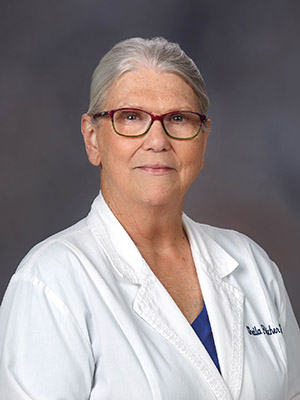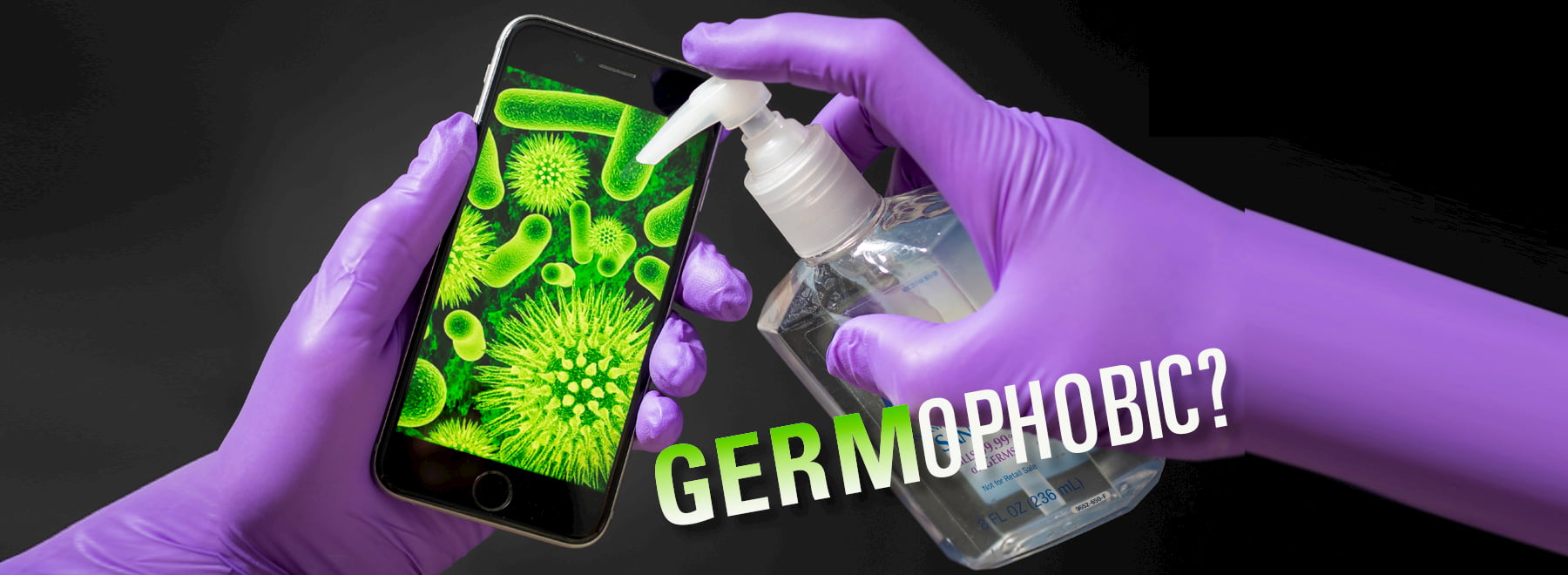UMMC infection experts: Clean hands best weapons in fighting bacteria
Note: This story appears in the August 2018 edition of CONSULT, the monthly e-newsletter published by the UMMC Division of Public Affairs that focuses on cutting-edge clinical advances, innovative educational programs and groundbreaking research occurring at UMMC. To receive CONSULT in your email, visit www.umc.edu/CONSULT to sign up.
If you never ride in or on a plane, train or automobile; if you never shop at the grocery store, talk on a cell phone, use a restroom, ride in an elevator or take the stairs; if you never wear lots of clothes or none at all, work at a job or don’t work at a job; and if you never eat out or eat in, breathe in or breathe out – then ignore the following.
Otherwise, you can increase your chances of living longer, or at least better, by remembering to wash your hands, and wash them well. Because objects you come in contact with every day may be storehouses of the stuff that flu, colds and staph infections are made of.

“Your hands – that’s the No. 1 vector for how germs are spread,” said Dr. Jason Parham, associate professor of medicine, infectious diseases, at the University of Mississippi Medical Center.
“We’re surrounded by bacteria and viruses; we coexist with many of these,” said Parham, who is also director of the Division of Infectious Diseases and medical director of the Antimicrobial Stewardship Program. “It is important to understand that we can’t, and shouldn’t, try to sterilize our world, but it is important to know where danger often lies and how we can reduce the risk.
“The germs can be on the shopping cart handle or a counter with uncooked chicken or the elevator button or your mobile phone, but they’re moving from one area to the other, usually by unwashed hands.”
Germs, or microorganisms that can cause disease, are bacteria, viruses, fungi and protozoa. They lurk everywhere, especially beneath your feet, which brings up the parasitical pipe dream known as “the five-second rule.” Is it true?

“That’s a no,” said Sheila Fletcher, director of infection prevention at University Hospital. “Everything that falls on the floor is dirty as soon as it hits the floor.”
That slice of cheesecake that crash-landed on the linoleum? It’s a goner. You can’t wipe away or blow away the evil that germs do.
“It’s the contact, not the time,” Parham said. “Bacteria don’t have to walk over to your area.”
Salmonella, hepatitis and norovirus are some of the potential costs you might pay for accepting the fantasy of time-delayed contagion.
Another bill that might come due is posted by the bacterium Clostridium difficile, or C. diff., which causes such symptoms as diarrhea, fever, nausea, inflammation of the colon (colitis) and more. It’s associated with more than 29,000 deaths in the U.S. each year, according to the Centers for Disease Control and Prevention.
“Alcohol won’t kill it,” said Fletcher, a registered nurse. “Soap and water may not kill it outright, but the friction of washing your hands rinses off the spores.”
C. diff. is the archenemy of hospital and nursing home staffs everywhere.
Whenever Fletcher conducts orientation for new employees at UMMC, she raises the assumption held by many people that “everything they touch stays clean unless their hands are dirty,” she said. “But guess what? Their hands are dirty.
“Everything is contaminated. Even though a patient’s room has just been cleaned, once we bring that patient in that room, the room is no longer clean. Patients touch the bathroom door knob. They touch the call light. Their feet touch the floor.
“Here’s the thing: The only way for everything to be truly clean is for everyone to walk around with a [sanitizer] wipe in their hands and clean everything we touch. You can get OCD (Obsessive-Compulsive Disorder) real quick.”
Parham said it’s impossible to remove all viruses and bacteria from our environment. “But you can use common sense. You can be aware of the high-traffic areas for people, where it’s more likely that a door handle, for example, or elevator button is going to be contaminated with a virus or a bug.
“You can cut down on exposure to many of them.”
Here are just some of the objects or settings that require vigilance:
• Cell phones: “They’re filthy,” Fletcher said. “They’re probably nastier than your hands. You put them in your pockets, purses, your grubby hands. You put them up to your face, so you are spitting on them when you’re talking on the phone.
“Clean them at least once a week. You can use whatever sanitizer wipes you have at home.”
A dampened microfiber or lint-free cloth will also work, Parham said.
• Bathrooms/public restrooms: “People worry about the toilet bowl and seat, but those are not the high-germ carriers,” Parham said. “It’s the handles on the stalls, the floor, the person’s phone taken into the bathroom, the belt buckle you touched before you washed your hands. The bottom of your purse if you set it on the floor.
“Studies suggest around only half of people are washing their hands after using a restroom. The time it takes to sing ‘The ABC Song’ is a decent amount of time to wash your hands with soap and water. Duration is important to some degree; you can’t reach all the areas of your hands in just two seconds. The most missed places are between the fingers, the back of the hand and the knuckles.
“You also need to wash your hands before eating and after sneezing or coughing into them.”
Fletcher added: Always grasp a restroom door with a paper towel.
• Grocery stores: “You’re picking up viruses from other people there,” Parham said. “But you’re also contaminating yourself or your food items or cloth shopping bags with salmonella and other microbes that are present. Once they have come into contact with your kitchen counter, it needs to be wiped down. Plastic bags should be disposed of and cloth shopping bags need to be routinely washed in hot water or add bleach to the wash.
“Use the sanitizers provided at stores to wipe down the cart handle and places where you will set down your purse.”
Fresh fruits and vegetables carry germs pawed by other shoppers, Fletcher said.
“So you are processing germs they had on their hands, as in the recent salmonella outbreaks from lettuce. And, I don’t know about you, but when I bring a can of corn home from the store, I wipe off the lid.”
• Public transportation: “You can get sick after you’ve touched the strap handles, or the seat, on a bus or train if you touch your face before washing your hands,” Parham said. “If you could avoid touching your eyes, nose and mouth with unwashed hands, that would cut down on a lot of respiratory and GI infections.”
• Restaurants: “Carry alcohol-based gels and sanitize your hands before you eat,” Fletcher said.
Germs are the special of the day on most menus. As for silverware, set it on top of a napkin, not directly on the tabletop.
• Your kitchen: “Use a cutting board to prepare meats and vegetables instead of placing them directly onto a countertop,” Fletcher said. “Reserve one cutting board for meat and a different one for fruits and vegetables.”
• Clothes: Salmonella could be skulking in your pants. As could hepatitis and other viruses. Antidotes include washing clothes in hot water or using bleach, but, in today’s world, white clothes are more likely to get those treatments. Letting them tumble in the dryer for about 30 minutes is also effective, Fletcher said.
One last thought: soap and water vs. hand sanitizers
“Washing hands with soap and water is the best way to remove the most germs from your hands, but it is not killing the bacteria,” Parham said. “The lather from the soap lifts them from the surface of your hands and the water rinses them away. If soap and water aren’t available, hand sanitizers are still a great option.”
He said sanitizers should contain at least 60 percent alcohol and will kill the majority of germs present.
“There is evidence that repeated use doesn’t dry hands out like soap and water, but if your hands are visibly dirty, soap and water is the better option.”



